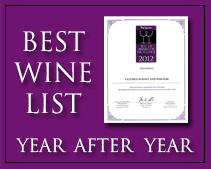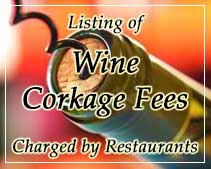Beyond St Estèphe, across the Chenal de Calon, is the Médoc appellation.
Date: September 29, 2010
About Wines from Medoc, Bordeaux, France
Best wine supplier in Philippines discusses wine related topics
Médoc, Médoc…so good they named it twice? Well, not quite, but there is more than one meaning to Médoc and this fact does appear to cause some confusion from time to time. It seems only sensible to me, therefore, that we should clear this up before we continue.
North of the city of Bordeaux, travelling up alongside the Gironde until we reach the Atlantic, is a region known as the Médoc. This is not an appellation, or a commune, but a geographical region that encompasses Margaux, St Julien, Pauillac and St Estèphe, as well as all those vineyards scattered to the west of these famous appellations, and also those to the north, beyond the boundary of the St Estèphe commune. Thus, when an individual talks of the wines of the Médoc, there is quite a good chance that they are referring to this region as a whole. When spotted on a wine label, however, the word Médoc means something very different; when used as an appellation, it refers to a much smaller, well defined and discrete region of Bordeaux, north of St Estèphe. Estates in the four aforementioned communes, as well as those located to the west of these, inland of the famous gravel croupes that bear the greatest vineyards of the left bank, are not entitled to the appellation. The same is also true of those estates that lie south of the ‘big four’, in the hinterland between the vineyards of Margaux and the suburbs of Bordeaux. All these vineyards have an entitlement to the Haut-Médoc appellation, one which has perhaps a touch more cachet than mere Médoc.
In order to provide some clarity, the land entitled to the Médoc appellation may sometimes be referred to as the Bas-Médoc, although this is not a term that is permitted on the label. Thank heavens, otherwise without doubt we would end up with some wines from the region labelled as Médoc, and some, perhaps even from neighbouring properties, as Bas-Médoc, leading to even greater confusion.
This chapter of my Bordeaux guide deals with these two appellations, Médoc and Haut-Médoc, both of which sport a number of estates which are significant not only in terms of value-for-money, but also when examining the sheer quality of the wines they produce. In addition, I will also look at the two lesser known communal appellations of the Médoc (the region, not the appellation). Being rather runtish communes, they can be easy to forget; nestled in alongside Margaux, St Julien, Pauillac and St Estèphe are Moulis and Listrac.
The Médoc
Medoc and Haut-MedocBeyond St Estèphe, across the Chenal de Calon, is the Médoc appellation. In terms of size this region of Bordeaux wipes the floor with those communal appellations to the south; whereas those typically have a thousand hectares each, give or take a few hundred, here we have 4700 hectares eligible for the vine and the appellation. But size is not everything, of course; the reputation of the wines of the Médoc do not match those from the four leading communal appellations. This is largely down to the distinctly different terroir; here the gravel croupes have faded away, subsumed by rich, heavy, moisture-retentive soils. In many sections drainage channels dominate the landscape, as shown on this map of just one small part of the appellation near the south east corner, not far from the boundary with St Estèphe. And the vineyards are not as tightly packed as they are further south, intermingled as they are with woodland, and sometimes with other crops.
The clay-rich soils influence the decision on what varieties to plant, and the Merlot grape – which handles such soils better than Cabernet Sauvignon – is more predominant here than it is further south. As a result of the Merlot-dominated blends, and of course the change in terroir, the wines have a different character to their more southerly neighbours. They may have a touch less finesse, but nevertheless there are plenty of good although perhaps rather robust wines, a number of which have their ardent followers. Perhaps one of the most notable is Potensac, which has been run for many years by the Delon family of Léoville-Las-Cases; the wines tend towards the structured and austere, but they can give admirable pleasure if sufficiently cellared. Other notable Cru Bourgeois (a now defunct ranking but the phrase still has some meaning, I think) estates – there are no properties ranked in 1855 this far north – include Preuillac, which has experienced a radical revitalisation under the auspices of Jean-Christophe Mau, but there are several others also worth considering.
The Haut-Médoc
Chateau PoujeauxThis appellation is a very different animal altogether in comparison to the Médoc. Although roughly similar in size, at approximately 4300 hectares, the land entitled to the appellation is strung out along the Médoc and encapsulates the four famous communal appellations, as well as both Moulis and Listrac. The terroir is thus very variable but it does include a few small areas of gravel which are not included within the communal boundaries. There are five Haut-Médoc properties included in the 1855 classification, but also a great number of Cru Bourgeois estates, as well as a few that eschew any such classification whatsoever. Looking at those estates ranked in 1855 first, this small pack is undoubtedly led by La Lagune, a Troisième Cru sometimes wryly referred to as the Premier Grand Cru of the region; not because of any desire to revise the 1855 classification, but because this is the first Cru Classé estate that one meets as one drives north out of Bordeaux on the D2. For many years now the wines, rich and usually oaky thanks to a policy of 100% new wood for elevage, have had a fervent following. Almost next door is Cantemerle, which may not command the same level of interest amongst Bordeaux savants, but it is frequently good value and only the ignorant should overlook it.
The remaining three estates, Camensac, Belgrave and La Tour Carnet lie to the west of St Julien, and of this trio it is the latter that has the best reputation. But it is not only the classed growth estates that we should be looking out for. One vineyard that may well put all these other estates to shame is Sociando-Mallet, located just to the north of St Estèphe, before the boundary marking the switch from Haut-Médoc to Médoc. Home to Jean Gautreau and his family, this estate has been responsible for some of the most appealing wines of the appellation I have ever tasted, in both great vintages such as 2005 but also in weaker years, most notably the 1997 which was delicious. Excluded from the 1855 classification, and having very sensibly abstained from the 2003 Cru Bourgeois debacle which saw the whole classification annulled in a court of law, Gautreau has gone it alone all these years, selling his wine on the basis of its intrinsic quality rather than any fancy classification, or indeed appellation, on the label. It is a practice that has worked very well for him; many would argue that the wine is superior to that produced by a number of estates in possession of a superior classification, and indeed Gautreau himself includes a number of Troisième Cru properties, such as Giscours, among what he sees as his peer group. The prices, today, reflect his achievements and his aspirations.
Throughout the Haut-Médoc there are estates at the Cru Bourgeois level which are worthy of our attention. I suspect we all have our favourites, but of those that I have assessed in recent years I think Citran stands out as being of good quality, although both Beaumont and Caronne Ste-Gemme are chronically under-appreciated and are thus frequently smart buys, particularly in favourable vintages.
And Not Forgetting…
Not too far away from these Haut-Médoc estates are the communes of Moulis and Listrac, the two smallest and least appreciated of the left bank communes. Moulis, at just 550 hectares or thereabouts, is the more tiny of the duo, although it boasts a number of high-flying Cru Bourgeois estates despite its varied terroirs. Listrac, meanwhile, despite its 650 hectares is not associated with so many well known properties. In the former appellation, the best wines come from Poujeaux and Chasse-Spleen; in the latter of these two communes, Fourcas Hosten and Clarke are perhaps the two most notable names, and each occasionally provides us with some vinous pleasure.
Source: http://www.thewinedoctor.com/regionalguides/bordeaux10medocmedoc.shtml
Clark Wine Center was built in 2003 by Hong Kong-based Yats International Leisure Philippines to become the largest wine shop in Philippines supplying Asia’s wine lovers with fine vintage wines at attractive prices. Today, this wine shop in Clark Philippines offers over 2000 selections of fine wines from all major wine regions in the world. As a leading wine supplier in Philippines, Pampanga’s Clark Wine Center offers an incomparable breadth of vintages, wines from back vintages spanning over 50 years. Clark Wine Center is located in Pampanga Clark Freeport Zone adjacent to Angeles City, just 25 minutes from Subic and 45 minutes from Manila.
Wines from Burgundy, Bordeaux, Rhone, Loire, Spain, Portugal, Germany, Austria, Alsace, USA, Australia, New Zealand, Italy, South Africa, Chile and Argentina etc. are well represented in this Clark Wine Shop.
http://www.ClarkWineCenter.com
Getting to this wine shop in Pampanga Angeles City Clark Freeport Zone Philippines from Manila
Getting to the Clark Wine Center wine shop from Manila is quite simple: after entering Clark Freeport from Dau and Angeles City, proceed straight along the main highway M A Roxas. Clark Wine Center is the stand-along white building on the right, at the corner A Bonifacio Ave. From the Clark International Airport DMIA, ask the taxi to drive towards the entrance of Clark going to Angeles City. From Mimosa, just proceed towards the exit of Clark and this wine shop is on the opposite side of the main road M A Roxas.
Clark Wine Center
Bldg 6460 Clark Observatory Building
Manuel A. Roxas Highway corner A Bonifacio Ave,
Angeles Clark Freeport Zone, Pampanga 2023
0922-870-5173 0917-826-8790 (ask for Ana Fe)
Wine@Yats-International.com
YATS Wine Cellars
Manila Sales Office
3003C East Tower, Phil Stock Exchange Center,
Exchange Rd Ortigas Metro Manila, Philippines 1605
(632) 637-5019 0917-520-4393 ask for Rea or Chay
Best place to buy wine in Clark Pampanga outside Manila near Subic and Angeles City Philippines is Clark Wine Center.
You can skip to the end and leave a response. Pinging is currently not allowed.







